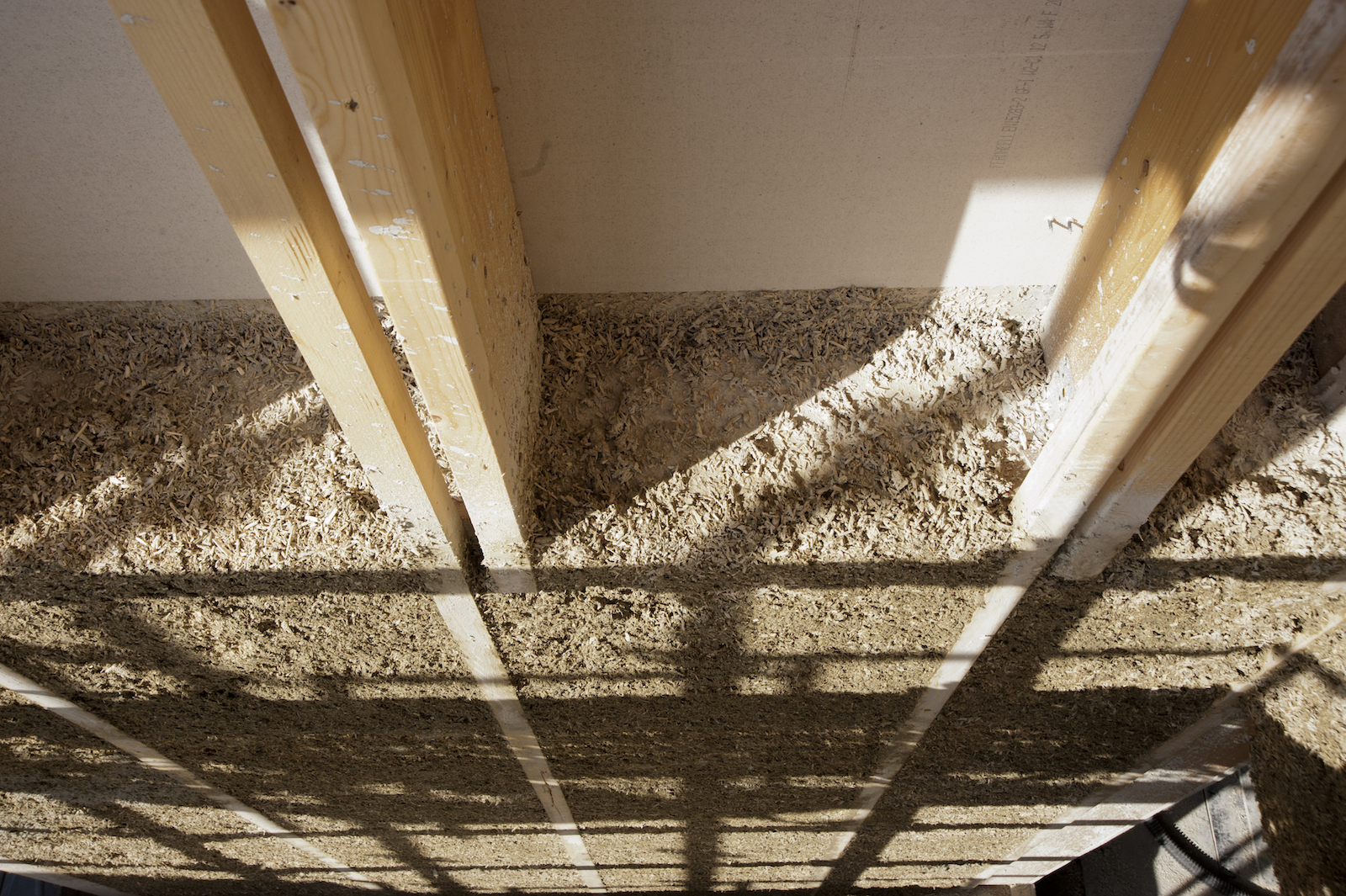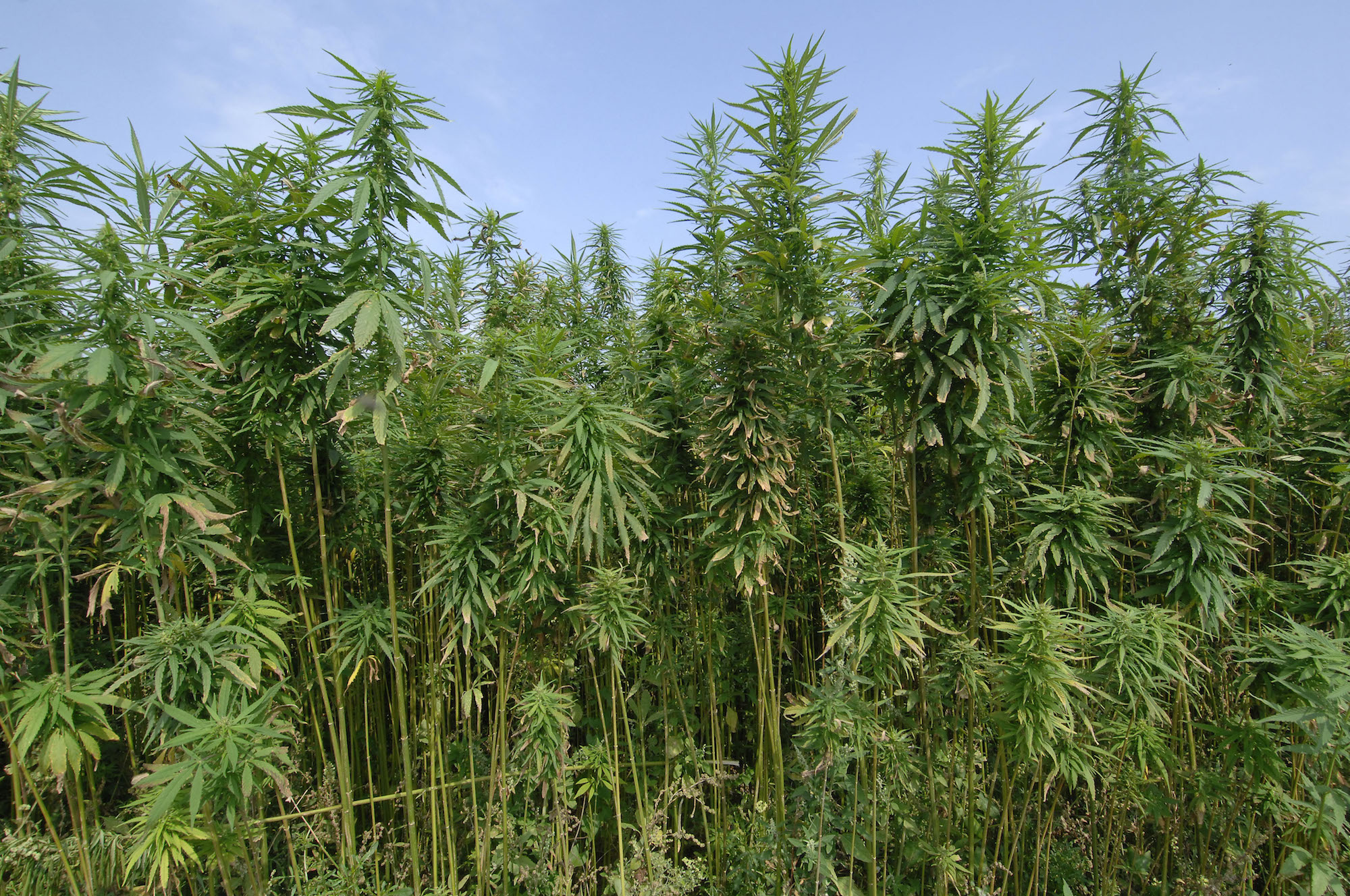Articles Menu

Mar 30, 2021
Winter in Paris is notoriously clammy, and this winter was no exception. But Gregory Ferembach didn’t need to turn on his heat much. One reason? The walls in his public housing building are lined with one of nature’s best insulation materials: hemp.
“We’re never cold in winter,” Ferembach said in French. “The kids walk around barefoot all the time, or even in their underwear.”
Ferembach says it helps that their apartment is on a middle floor, and their building is sandwiched between two others. But the coziness also owes to the unique material in their walls: “hempcrete,” a concrete-like blend made by mixing hemp hurd — the woody core of the cannabis plant — with water and lime. Despite the name, the material isn’t a direct substitute for concrete. But as an insulating material within walls, it holds the potential to transform the homes where we reside in ways that are healthier for people and the planet alike.

The building industry takes a staggering toll on the environment. It’s not just concrete, which is depleting the world’s sand, making cities more flood prone, and spewing a huge amount of greenhouse gases into the atmosphere along the way. There’s also the insulation in our walls, the vinyl coating our floors, and the laminates in our countertops, most of which are derived from fossil fuels and have a sizable carbon footprint. From the foundations to the roof, today’s buildings are part and parcel of our extractive economy.
And that’s just the construction. Factor in the energy used to power and heat them, and buildings are responsible for nearly 40 percent of global carbon emissions, according to the U.N.
John Washington, a Buffalo-based organizer for the Homes Guarantee campaign, says it’s critical that climate mitigation efforts address both sides of this equation.
Sustainability is “not just saying we want homes that have solar panels and that require less fossil fuel in the heating system,” he said. “What about the fossil fuel, chemical, and plastics production in the process of building and rehabilitating the home?”
Conventional building materials pollute our indoor air, too: many of them release volatile organic compounds (VOCs) like formaldehyde, a known carcinogen, and other harmful chemicals. That’s without counting materials like lead and asbestos, which continue to plague public health even decades after they were banned, especially in communities of color.
“In Buffalo and in many Rust Belt cities,” Washington said, “we have folks whose homes literally are killing them.” The effort to retrofit those homes as cheaply and efficiently as possible usually leads contractors back to petrochemicals.
Enter hempcrete. The natural building material has gained a dedicated following among green builders, featuring in homes from Cape Town, South Africa, to Cambridgeshire, U.K. to Asheville, North Carolina. With the Biden team promising to retrofit and build millions of homes to fight the climate crisis, sustainable materials like hempcrete are poised for a much wider breakthrough in the U.S.

As construction scales up, the question is: can hemp be part of an affordable housing future — not just one for eco-conscious elites? Paris is determined to show that it can be.
Hempcrete’s core purpose is insulation, which is of course critical to reducing a building’s use of energy for heating and cooling. In pure insulation value for a given thickness, it’s slightly less effective than typical, plastic-based materials like fiberglass or foam board. Still, it has one distinct advantage.
Hempcrete acts like a “sponge,” said Benoît Savourat, a French farmer and the president since 1998 of the influential hemp growers’ cooperative La Chanvrière de l’Aube. (“Chanvre” means hemp in French, and l’Aube is the part of northeastern France where the cooperative is based.) It absorbs moisture from the surrounding air when it’s humid and releases it again when it’s too dry. That plays a crucial role in stabilizing the “felt temperature” of a room.
“When you’re in a humid environment, you need to heat it to 70 degrees or more,” said Savourat. “With hempcrete, you’re perfectly comfortable at 65.” (I translated Savourat’s comments from French and converted the temperatures from Celsius to Fahrenheit.)
Conversely, summer air doesn’t feel as sticky, making it tolerable without air conditioning. That means less energy use year-round, and could make a big difference as summer temperatures continue to rise.
Hemp’s real edge when it comes to fighting climate change, though, is in the carbon it absorbs throughout its life cycle. In a growing season of about eight weeks, an acre of the crop can sequester some 10 tons of CO2 — more than a typical acre of trees can absorb in a year.

Different parts of the plant can then go to a variety of uses. Historically, including in the United States, industrial hemp has mainly been grown for its strong outer fibers, which can be woven into textiles, pulped into paper, or even transformed into forms of plastic. That leaves the inner core, or hurd, which is the main ingredient of hempcrete. Combine the hurd with lime, a powder derived from limestone which acts as a binder, and you get the sustainable building material.
Once blended together, hemp and lime continue to absorb carbon, offsetting emissions from other construction materials. (Because hempcrete is not a structural material, materials like wood, steel, or concrete are still needed to provide foundations and a frame.) Altogether, analysis by the Healthy Materials Lab at Parsons School of Design has found that building a wall with hempcrete generates roughly three times fewer carbon emissions than building a wall with conventional methods. The French engineering firm LM Ingénieurs found a similar figure when evaluating buildings over a 60-year lifecycle.
Gregory Ferembach is 36 and lives with his wife, two children, and cat about 10 minutes from the bustling République square, in one of Paris’s trendiest neighborhoods. Their six-story building, completed in 2017, was built to the highest standards of green design, including its hempcrete interior. Out front, its smooth stone facade blends in seamlessly with its neighbors, constructed in Paris’ iconic Haussmann style.

Yet Ferembach and his family pay about $1,600 per month for their three-bedroom apartment — half the market rate. Many of their neighbors pay less, based on their incomes. That’s because their building belongs to Paris’s public or “social” housing, expanded significantly under Mayor Anne Hidalgo. Ferembach and his wife freelance in advertising and real estate, respectively, which puts them on the upper end of the income threshold for social housing. Still, for the family of four, the reduced rent means the difference between staying in Paris and fleeing to the suburbs. The low heating bills help, too.
Across the Paris region, social housing serves as an “engine” for more sustainable design and supply chains, says Isabelle Quet Hamon, director of sustainable development at Paris Habitat, the city’s main social housing agency. That role, she says, is inextricable from the agency’s core mission of providing high-quality homes for all.
Paris Habitat inaugurated the city’s first hempcrete development in 2012. The five-story building on Rue Bourgon, in the city’s 13th arrondissement or district, is tiny by social housing standards, with just eight apartments. But even today, it remains an outlier in the single-family-dominated world of hemp construction. Paris has meanwhile added at least three more hempcrete buildings, totaling about 40 subsidized units, and more are in the works. An eight-story, 15-unit building is underway in the ritzy 16th arrondissement, while another was just completed in the neighboring suburb of Boulogne-Billancourt.


Hemp and other natural materials still represent a small fraction of overall construction in Paris, including social housing. But Quet Hamon says they are becoming more mainstream in renovations, and Paris Habitat plans to use such materials in at least half of the thousands of social housing units that will need upgrades in the coming years.
The transition has presented its share of challenges. Quet Hamon says because most natural materials don’t insulate quite as efficiently as their petrochemical counterparts, a wall retrofitted with them usually needs to be a little thicker — something Paris Habitat seeks to avoid as much as possible in a city where every inch of floor space is precious.
There’s also the cost. Even in France, which has the most advanced hempcrete industry in the world, the supply chain still relies on a handful of key producers, and installation requires specially trained contractors. These growing pains are reflected in the cost: architect Richard Thomas of the Paris firm North by Northwest estimates that, on average, hempcrete construction adds about 20 percent to the cost of a new building. Per square foot of wall, he says, the costs can be as much as double those of conventional materials.
But Thomas is quick to add that those costs can be offset elsewhere. For example, because hempcrete is so lightweight, it allows for buildings with relatively modest foundations, saving on concrete below ground.
[Top image: Grist / Amelia Bates]